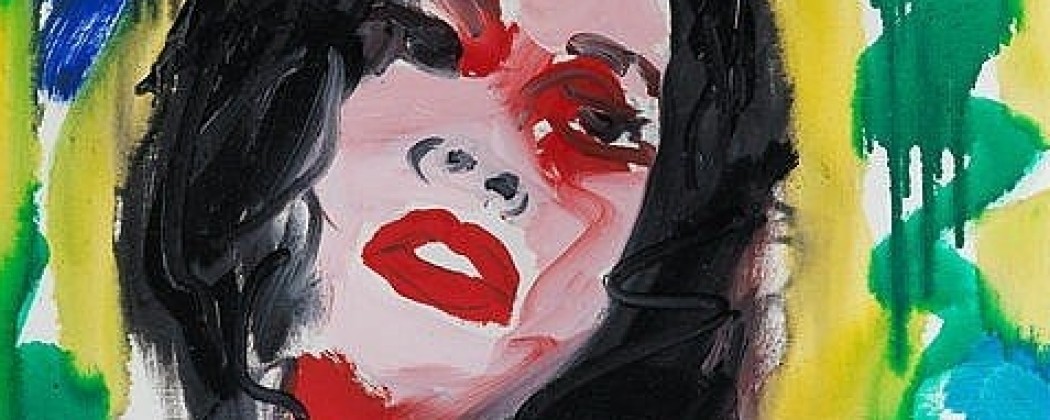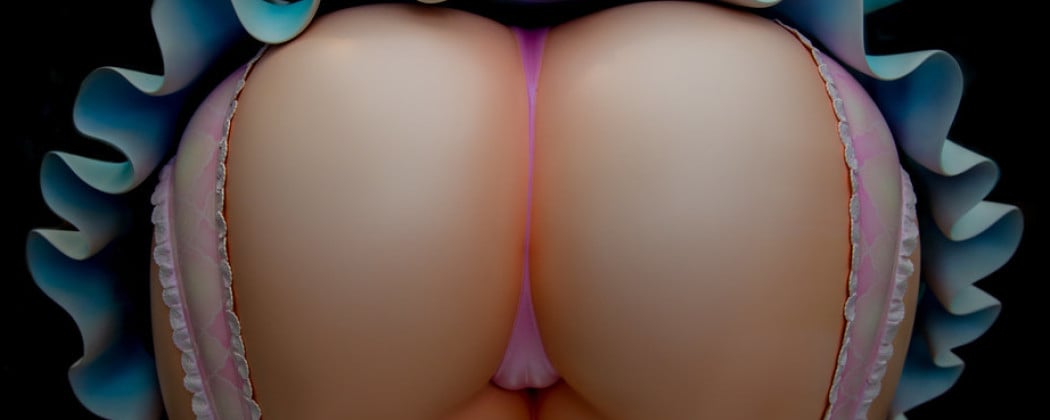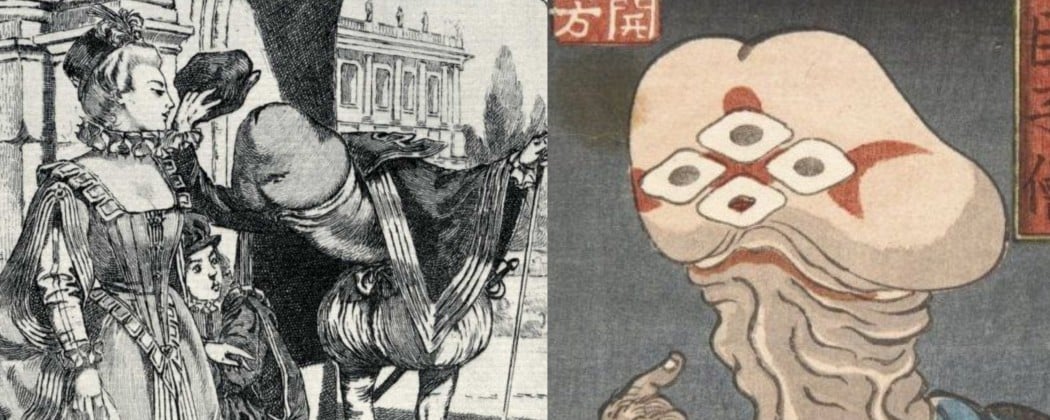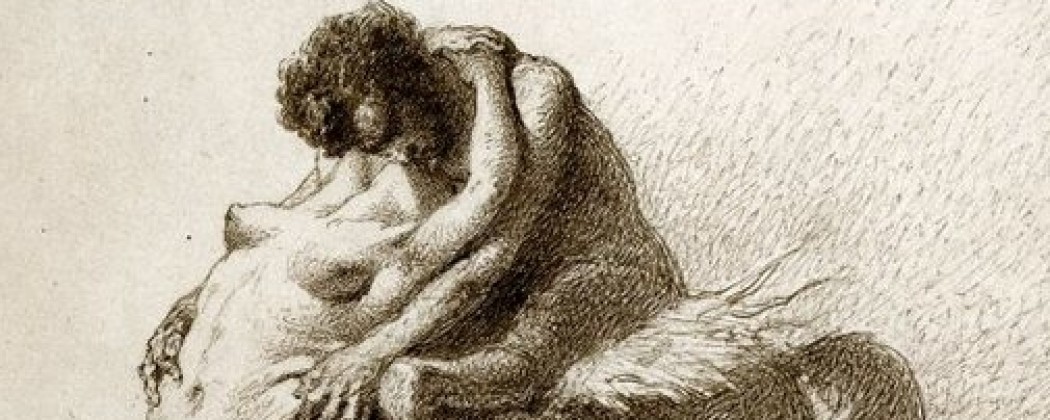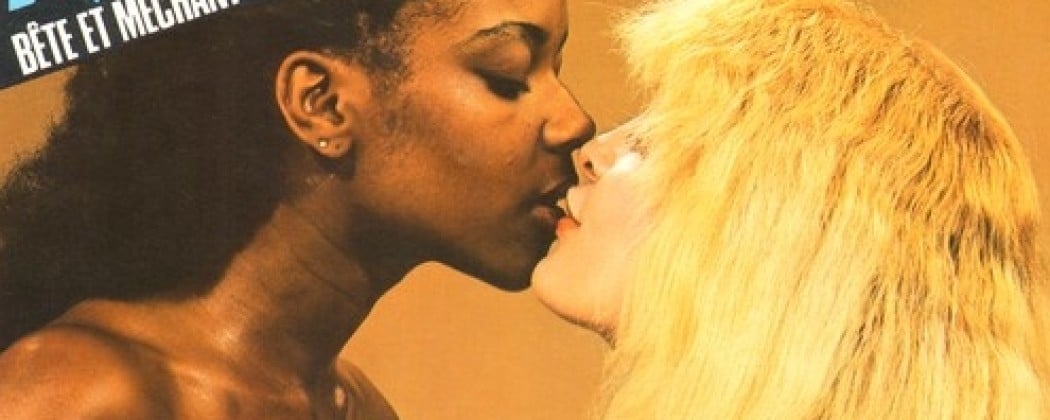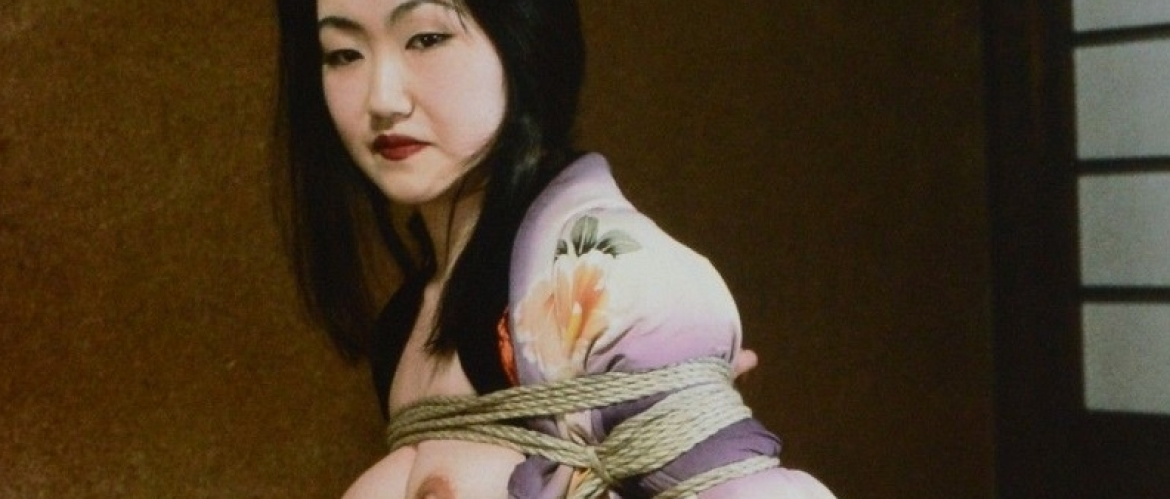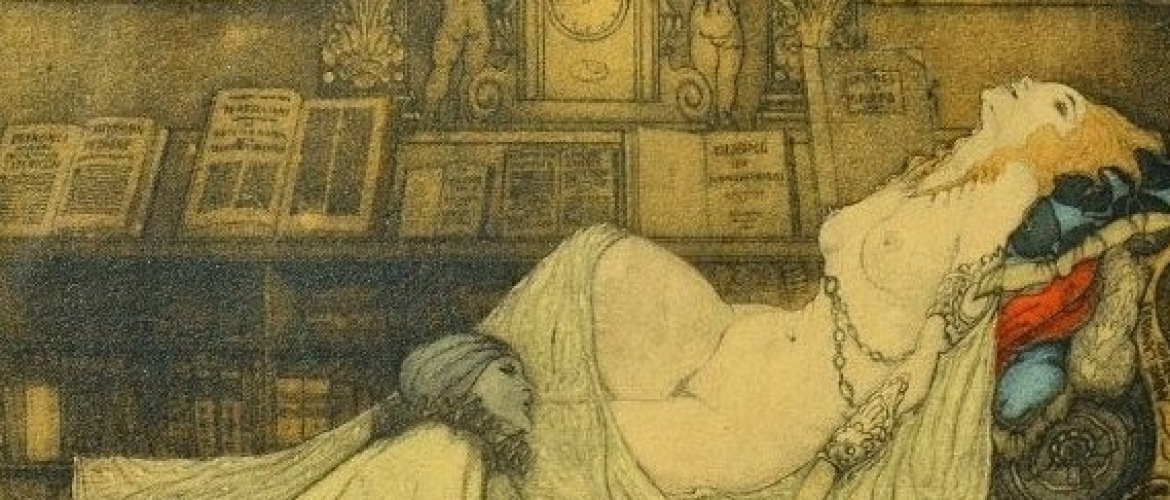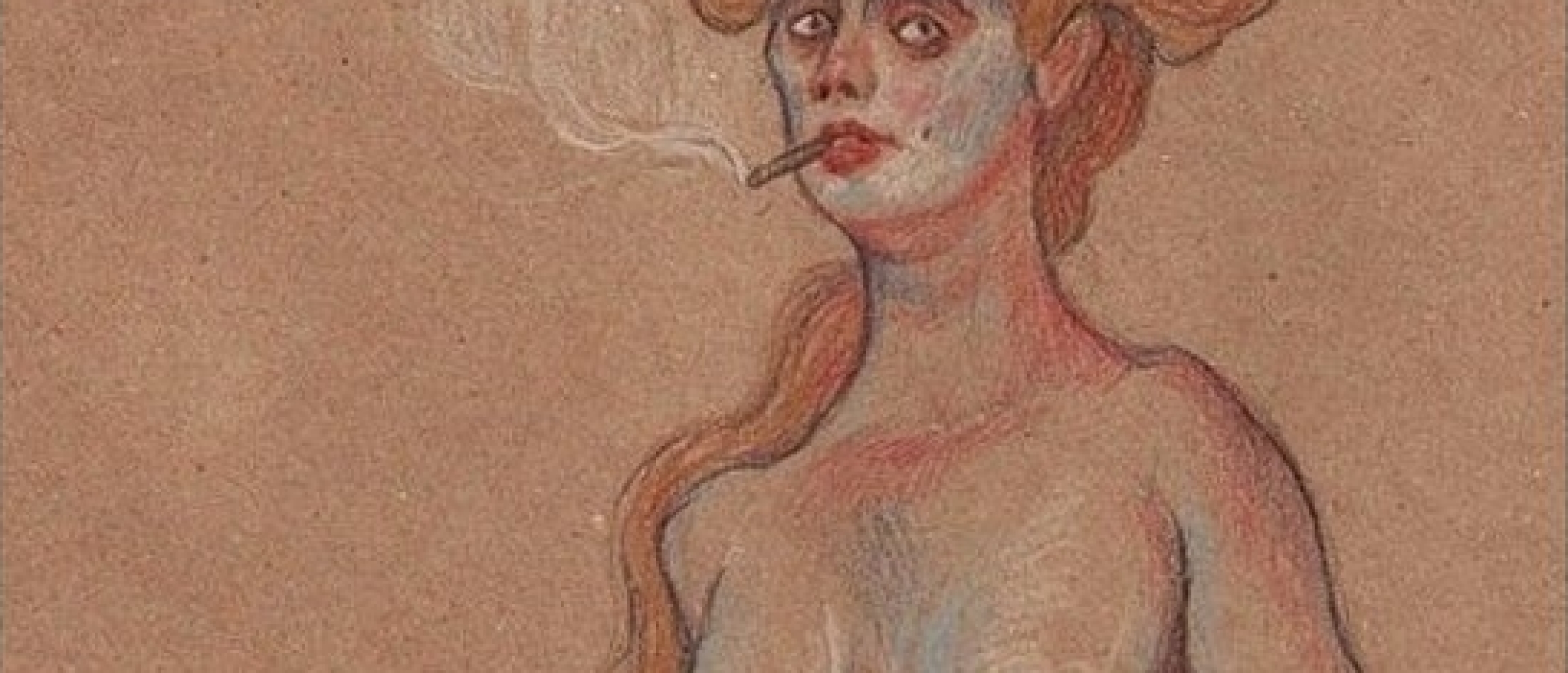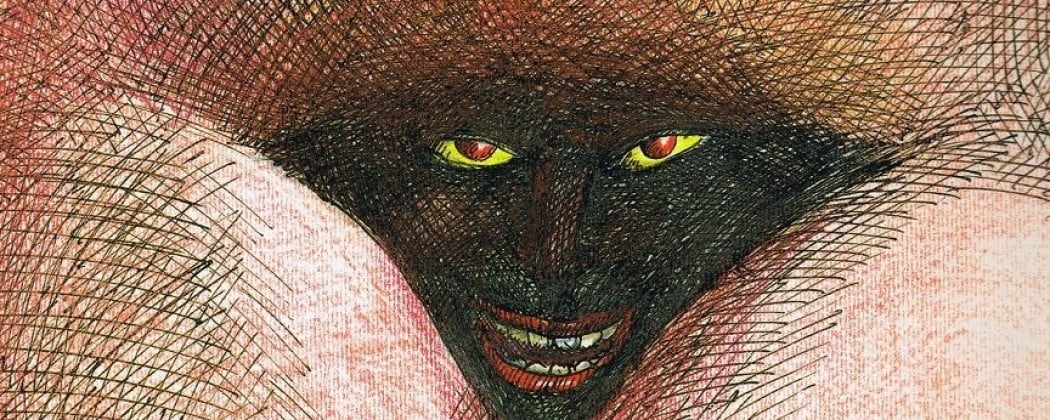
Roland Topor (1938-1997) was a multi-gifted person who showed himself as an artist, writer, performer, filmmaker. Being Jewish refugees living in Warsaw, Topor’s family unsuccessfully tried to find a safe corner in Europe when the Nazi movement began to gain its’ strength.
Prison Camp
When they came to France, Topor’s father Abraham was arrested but fortunately escaped from a prison camp in Pithiviers. In Vichy France, 4-year-old Topor was given to another family where he took a false name and identity. Topor’s family survived and reunited after 1945.
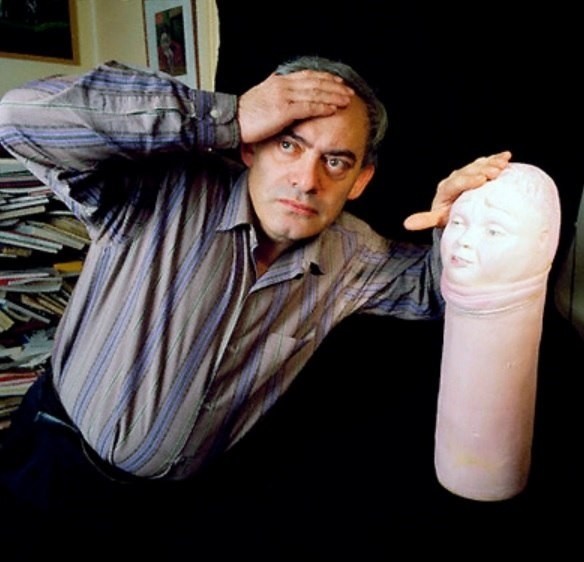
Fig. 1. The 1980s. Topor with maquet of a penis apparently used in the TV-show “Marquis” devoted to Marquis de Sade (1988)
Les Masochistes

Fig. 2. The cover
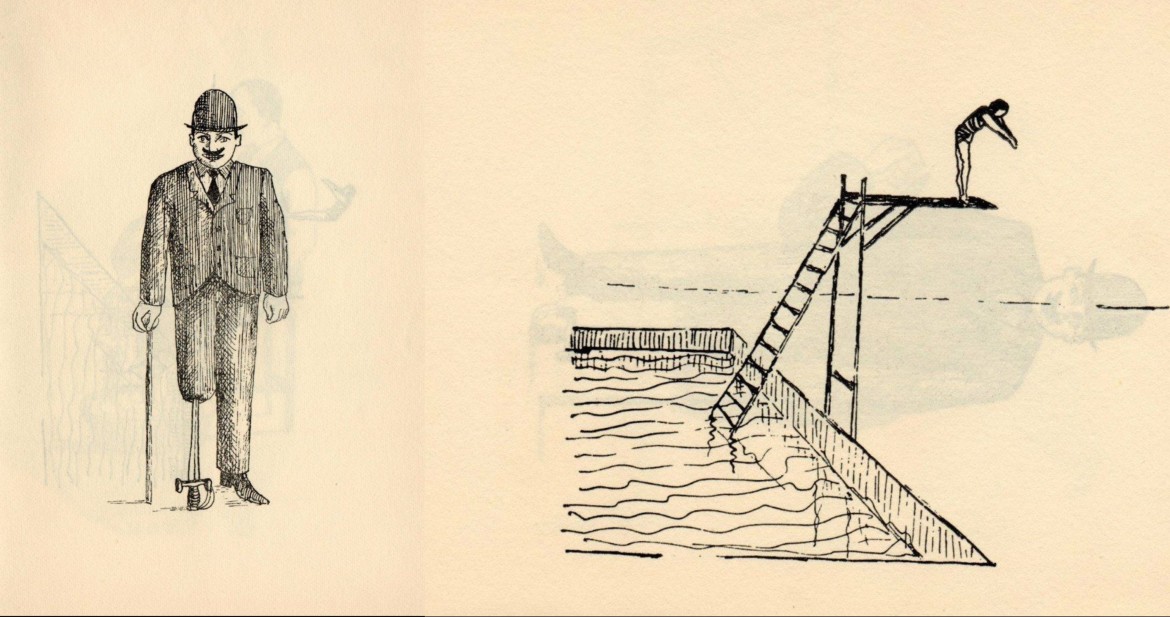
Fig. 3. Pages from “Masochists”
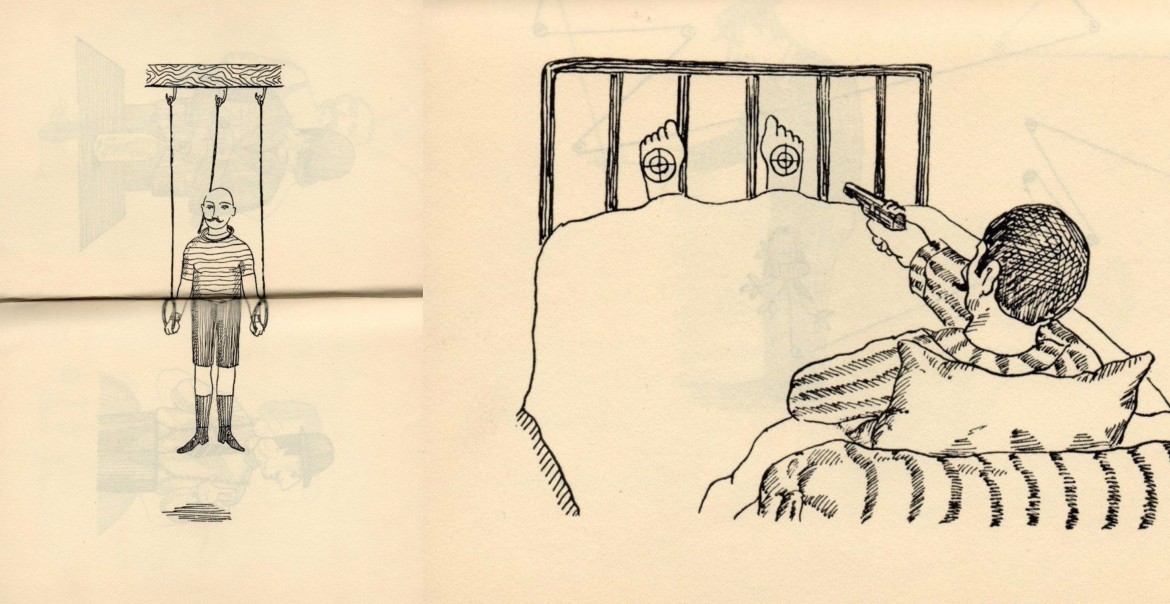
Fig. 4. Pages from “Masochists”
From 1955, Topor studied at the Beaux-Arts in Paris. His first publication was a cover of Bizarre magazine, which he created in 1958. In the 1960s, Topor also contributed to newspaper Hara-Kiri, Elle journal, and Fiction magazine. In the latter, he debuted as a writer with short story L’amour fou. His first book of drawings, Les Masochistes, was published in 1960 by E. Losfeld.
Black Humor
Here Topor manifested himself as an imaginative artist and a master of black humor. If you’re in a bad mood, “The Masochists” and “The Death Manual” (which is a descendant of medieval ars moriendi treatises) along with Topor’s textual work “100 Reasons to Commit Suicide Right Now” can raise your spirit. Or can make it easier for you to take the right decision. Anyway, you should check it out.
Le Panique
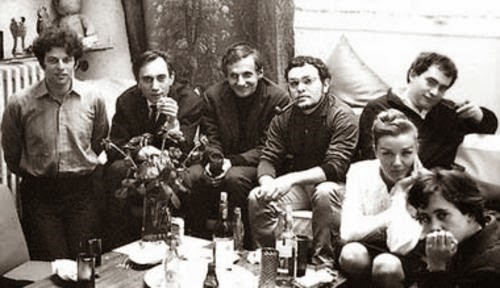
Fig. 5. Left-most: Jodorowsky. With a pipe: Arrabal. Next to Arrabal: Topor.
In 1962, Topor founded the Panic movement together with playwriter Arrabal and filmmaker Jodorowsky. The Panic was an actionist group named after the Greek god of nature and fertility Pan. The performances connected with destructive and disturbing acts were a meditative practice that, as it was believed among the participants, allowed to reach liberation and mystical insight.
Flagellation
One of the actions, “Sacramental Melodrama,” where the central figure was Jodorowsky, involved slitting the throats of two geese, taping two snakes to Jodorowsky’s chest, his undressing, and flagellation. The group stopped its’ activity in 1973 when Arrabal released the book Le Panique.
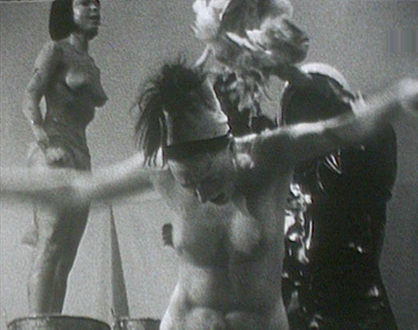
Fig. 6. “Panic” performances.
The Tenant
The most famous novel of Topor, filmed by Polanski in 1976, is a story about a man whose personality was successfully substituted with the identity of the woman who lived in his new apartment earlier and attempted to commit suicide by falling out the window. Losing one’s self is an all-time topic in art. Possibly childhood memories about the time when Topor was a Catholic schoolboy with another name played a crucial role in making of this story. The doppelganger motif and the problem of individuality would appear many times in Topor’s writings.
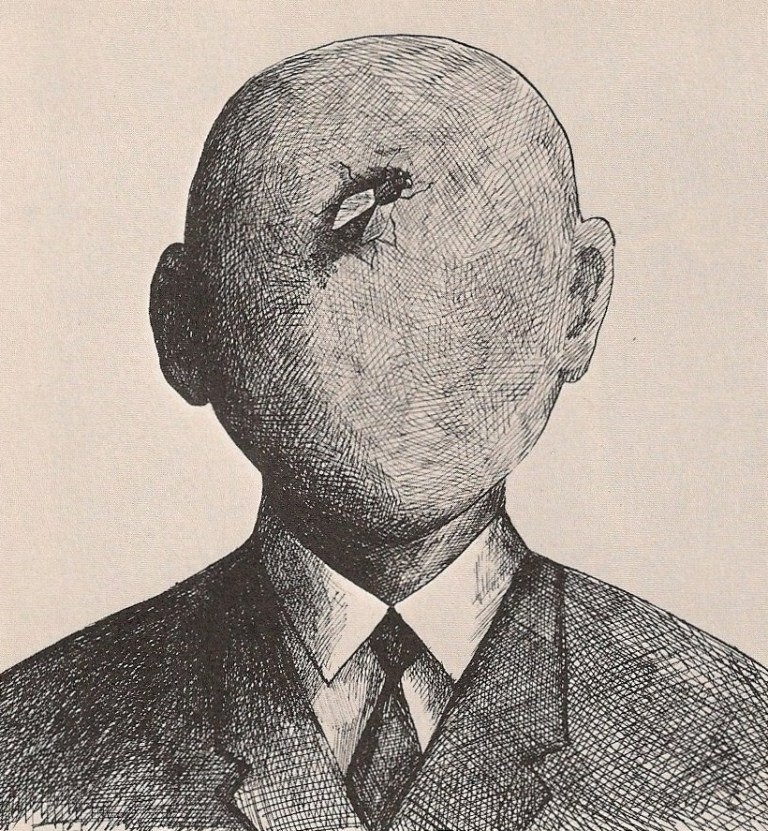
Fig. 7. Topor’s drawing used for a cover of “The Tenant”
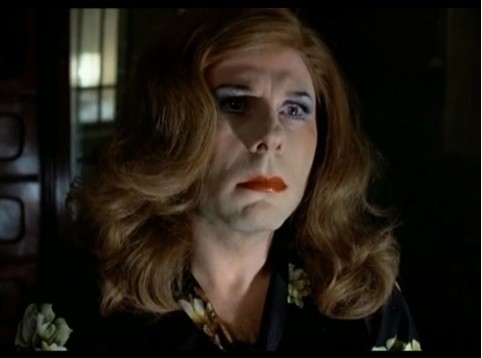
Fig. 8. Main character Trelkovsky as Simona Shule in the film of Polanski
The View on Sensuality
The specific sense of humor affects Topor’s understanding of eros. The depiction of sensuality is rather dark and ironic. Eroticism is a way to mark and mock human weakness, their common concerns like erectile dysfunction, unattractiveness, the size of genitalia, etc. Eros here is a power that dissolves one’s personality. Even deprivation of Trelkovsky’s identity in The Tenant begins with the feel of lust when he visits that previous resident (Simona Shule) in a hospital and meets there Stella who came to Simona too.
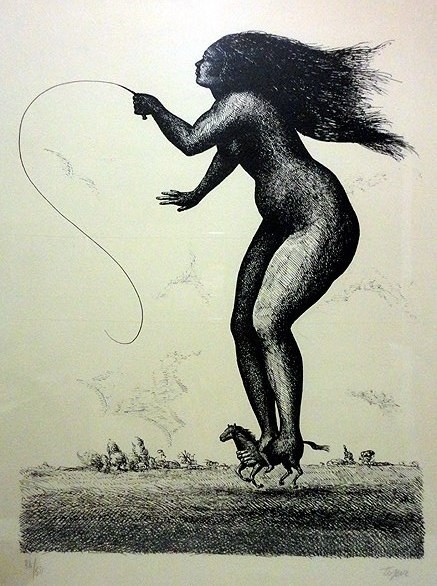
Fig. 9
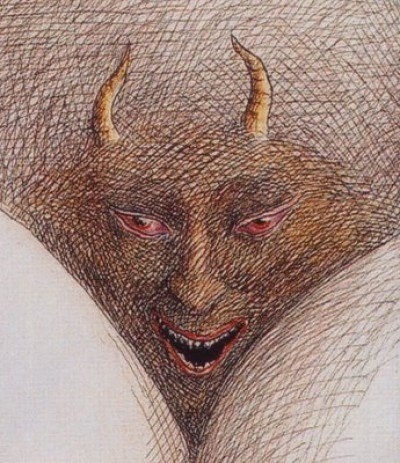
Fig. 10
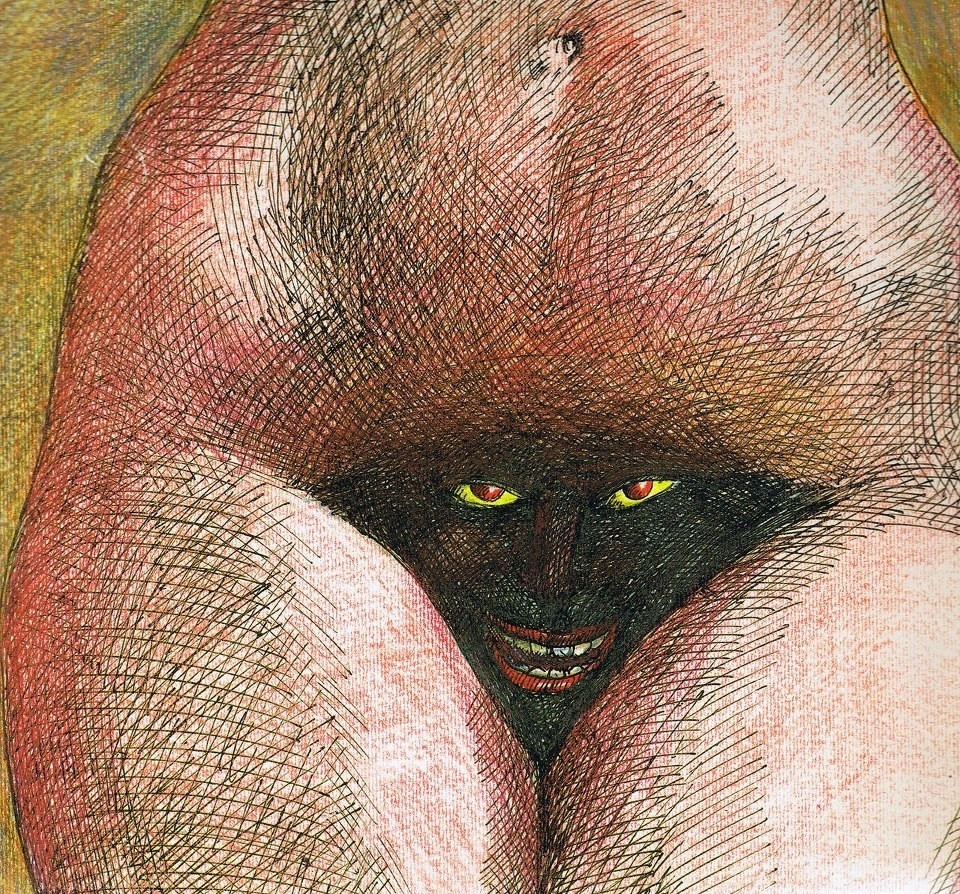
Fig. 11

Fig. 12
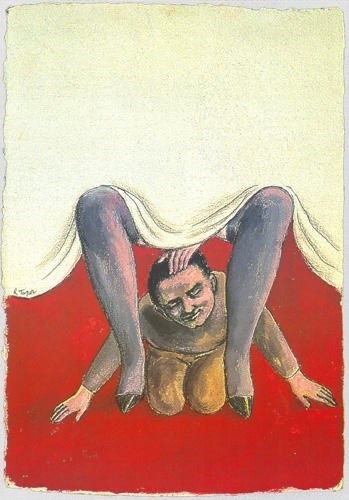
Fig. 13
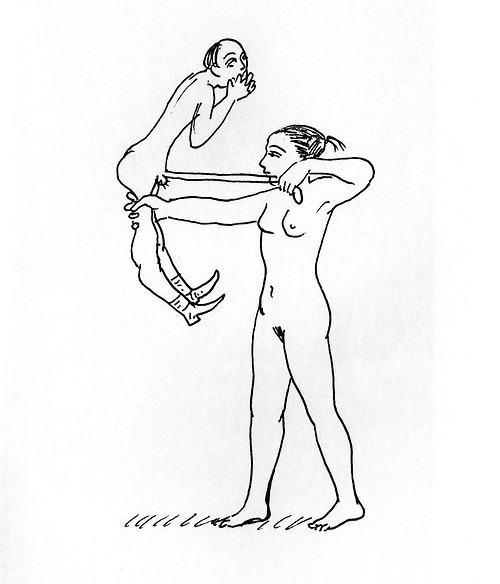
Fig. 14
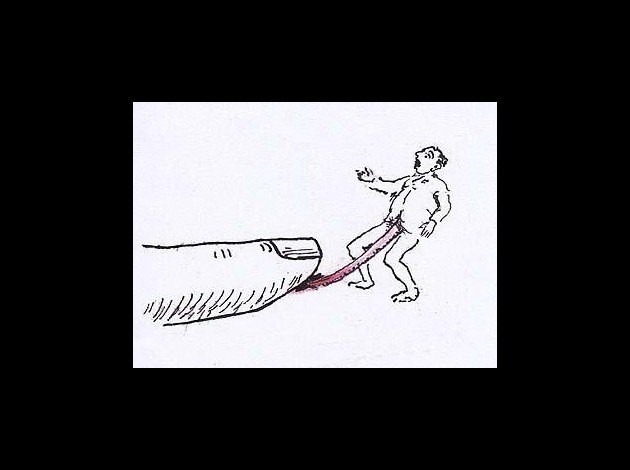
Fig. 15
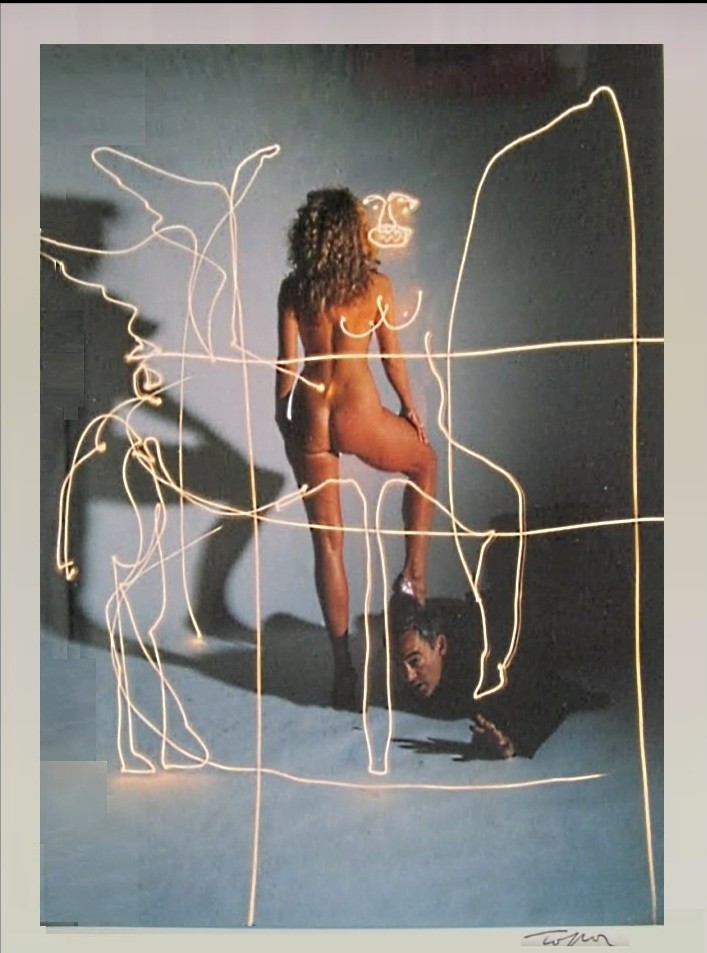
Fig. 16. Topor with a naked model
Stella
“The girl was wearing a green sweater, which clearly accentuated the line of her bust, and due to a soft bra, he even managed to discern her nipples slightly sticking out. Her dark-blue skirt slipped up much over knees, however, it was obvious carelessness, rather than intention. Nevertheless, over the elastic ribbon of her stockings, there a sizable piece of a naked body could be seen. This milky-white, a bit shadowed part of a thigh, which seemed strikingly shiny in contrast to the area where it verged into the darker zone, for some reason, literally charmed Trelkovsky, and he was struggling to shift his gaze from the thigh to the girl’s face with its’ absolutely banal expression.” (The Tenant)
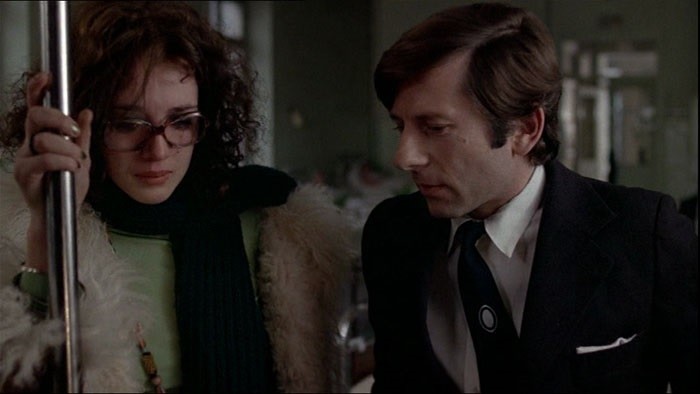
Fig. 17. Stella and Trelkovsky in a hospital (Polanski’s adaptation)
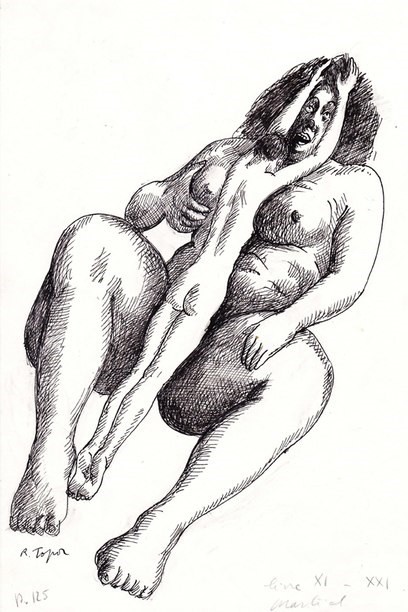
Fig. 18
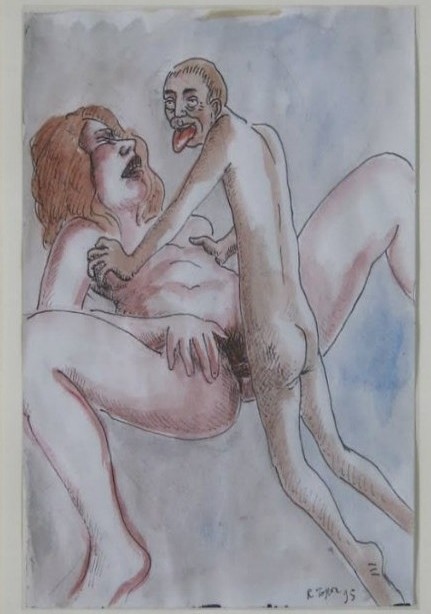
Fig. 19
Rops and Anti-Proust
Numerous drawings of powerful nude women with weak and skinny men trying to satisfy them sexually remind of the pictures by Felicien Rops, which we studied in one of our previous articles. The woman here is an independent femme fatale, whose image traditionally merges with nature, night, universe. She is a keeper of dangerous secrets, which are inaccessible to men, she is comparable to ancient sirens who used to kill men with their sweet songs. Topor himself was captivated by women, which can be proved by his answers to the “Anti-Proust” questionnaire of Jaque Sternberg:
Your favorite pastime? 1970: Being with women; 1976: Sleeping
What is the most beautiful natural phenomenon? 1970: Breasts of young women; 1976: The sea
What’s the most soothing thing? 1970: Money; 1976: The presence of a woman
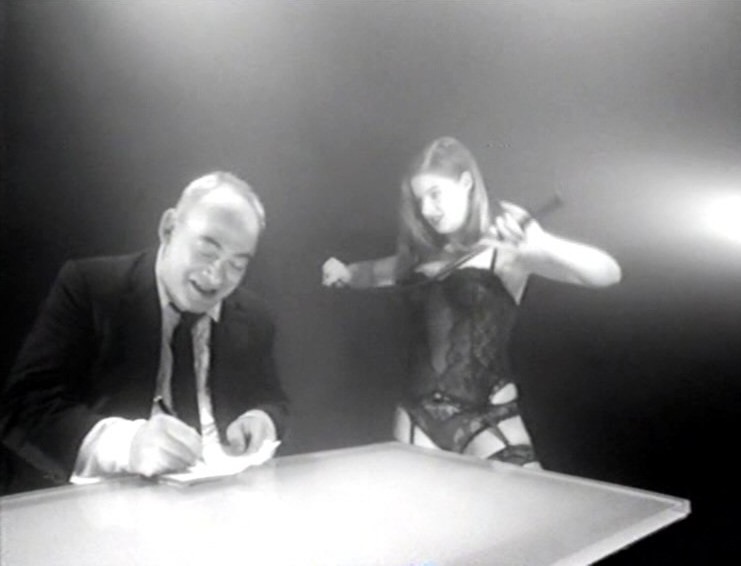
Fig. 20. Topor and a girl with a whip
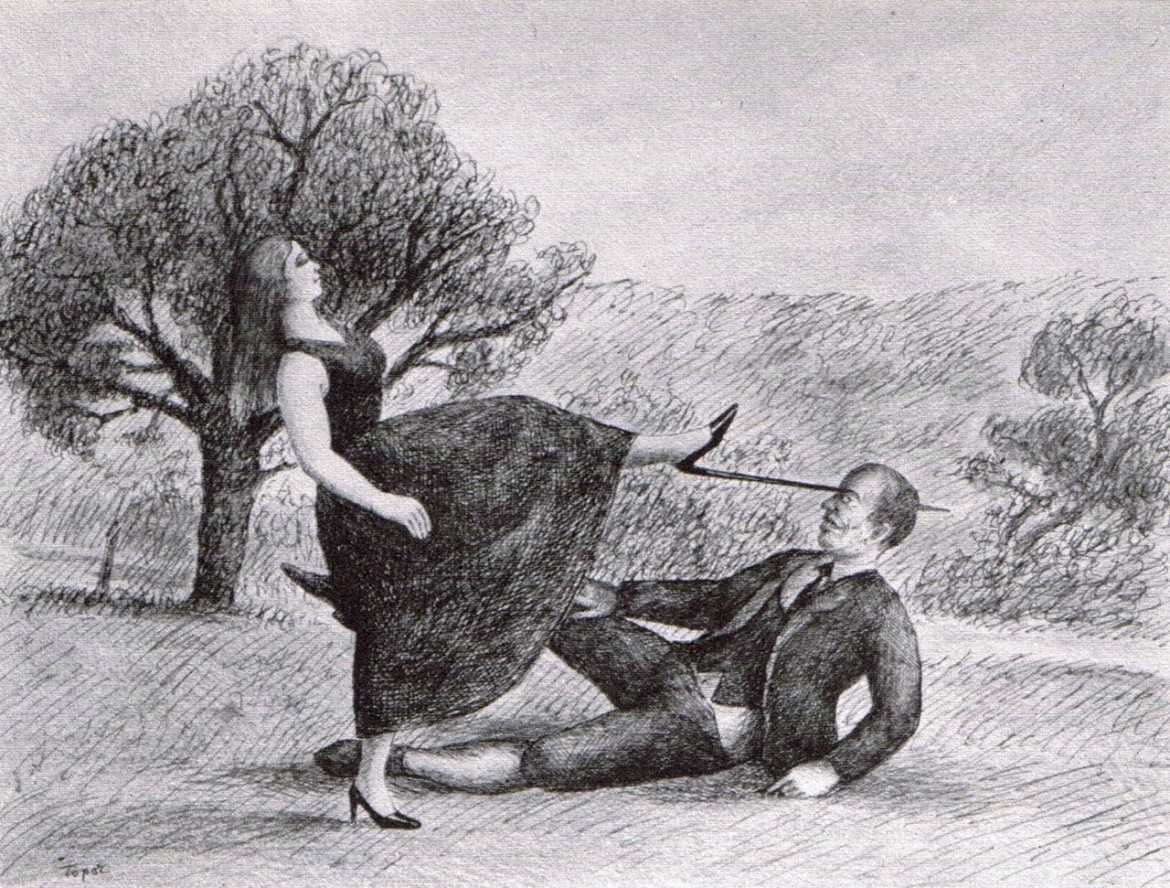
Fig. 21
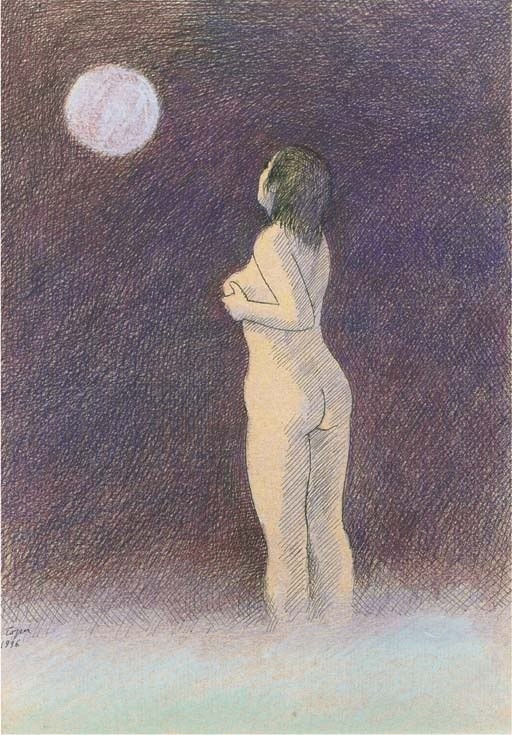
Fig. 22
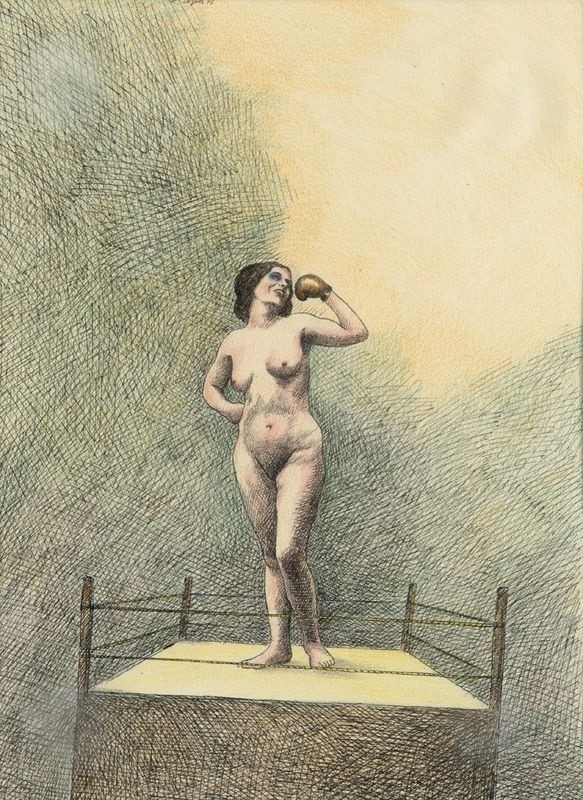
Fig. 23. “The Woman with a Golden Glove”
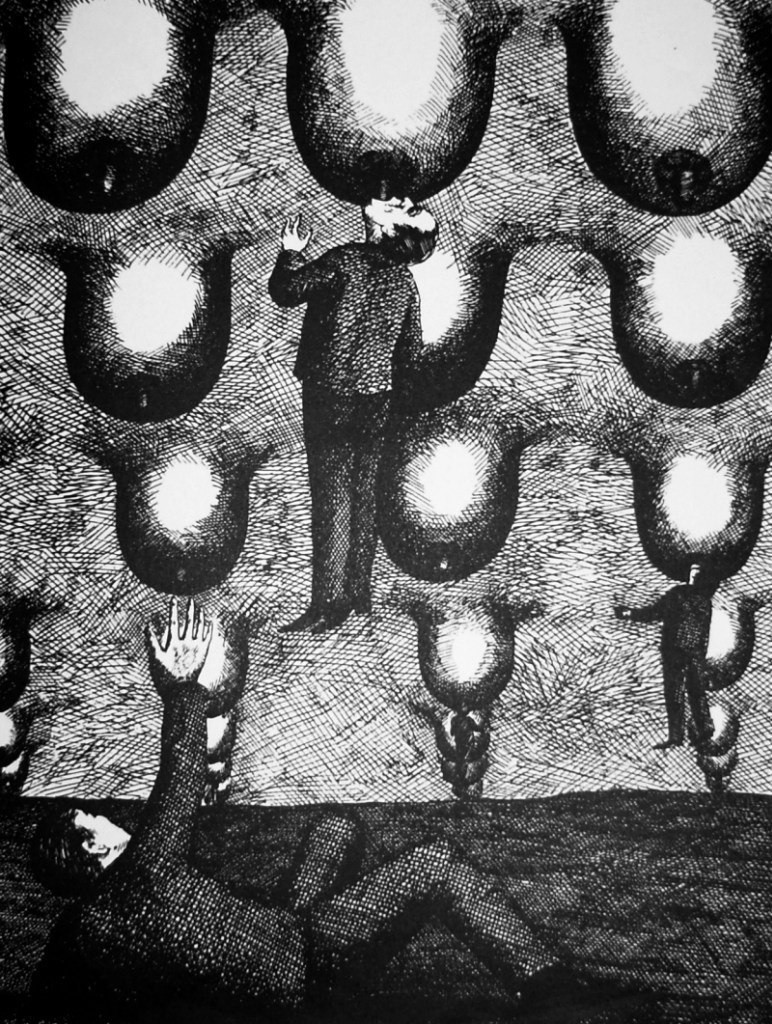
Fig. 24
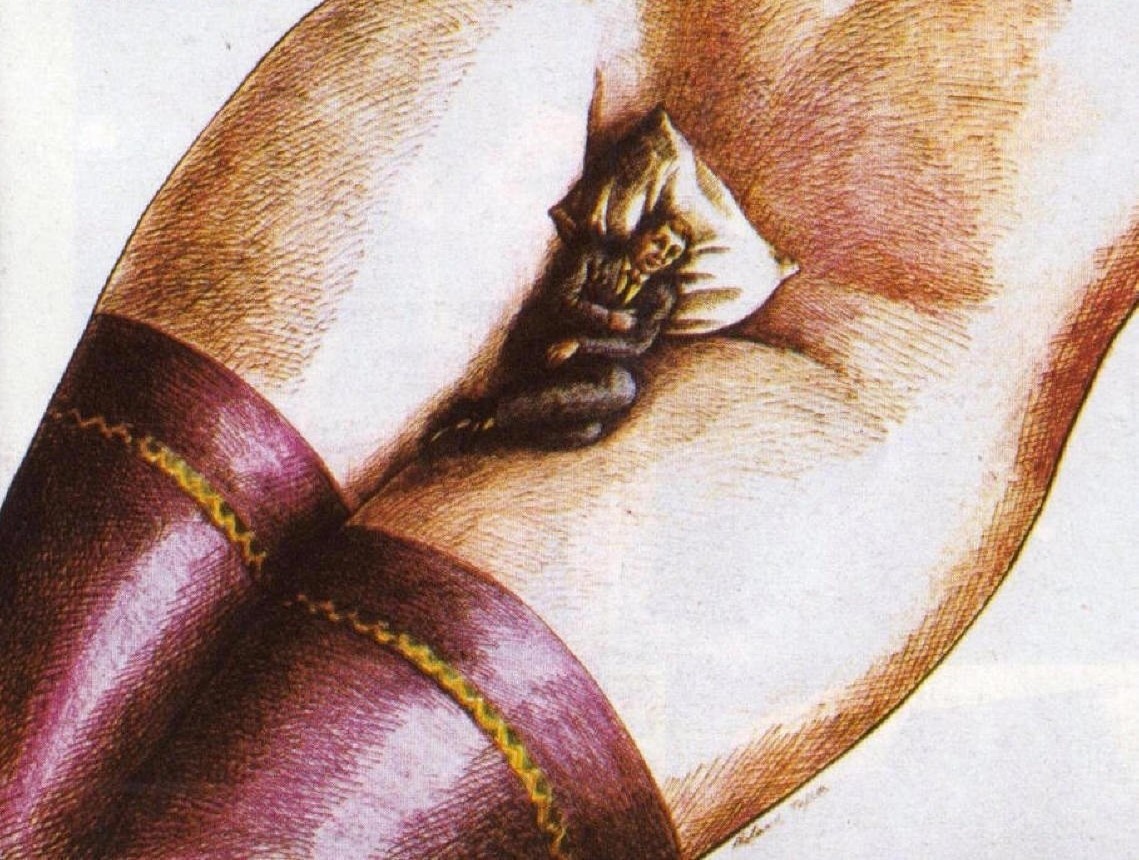
Fig. 25

